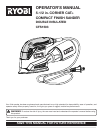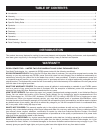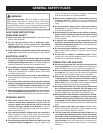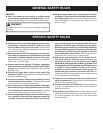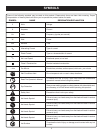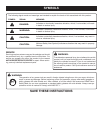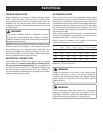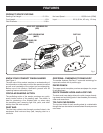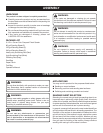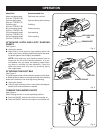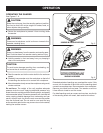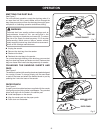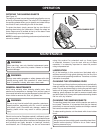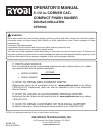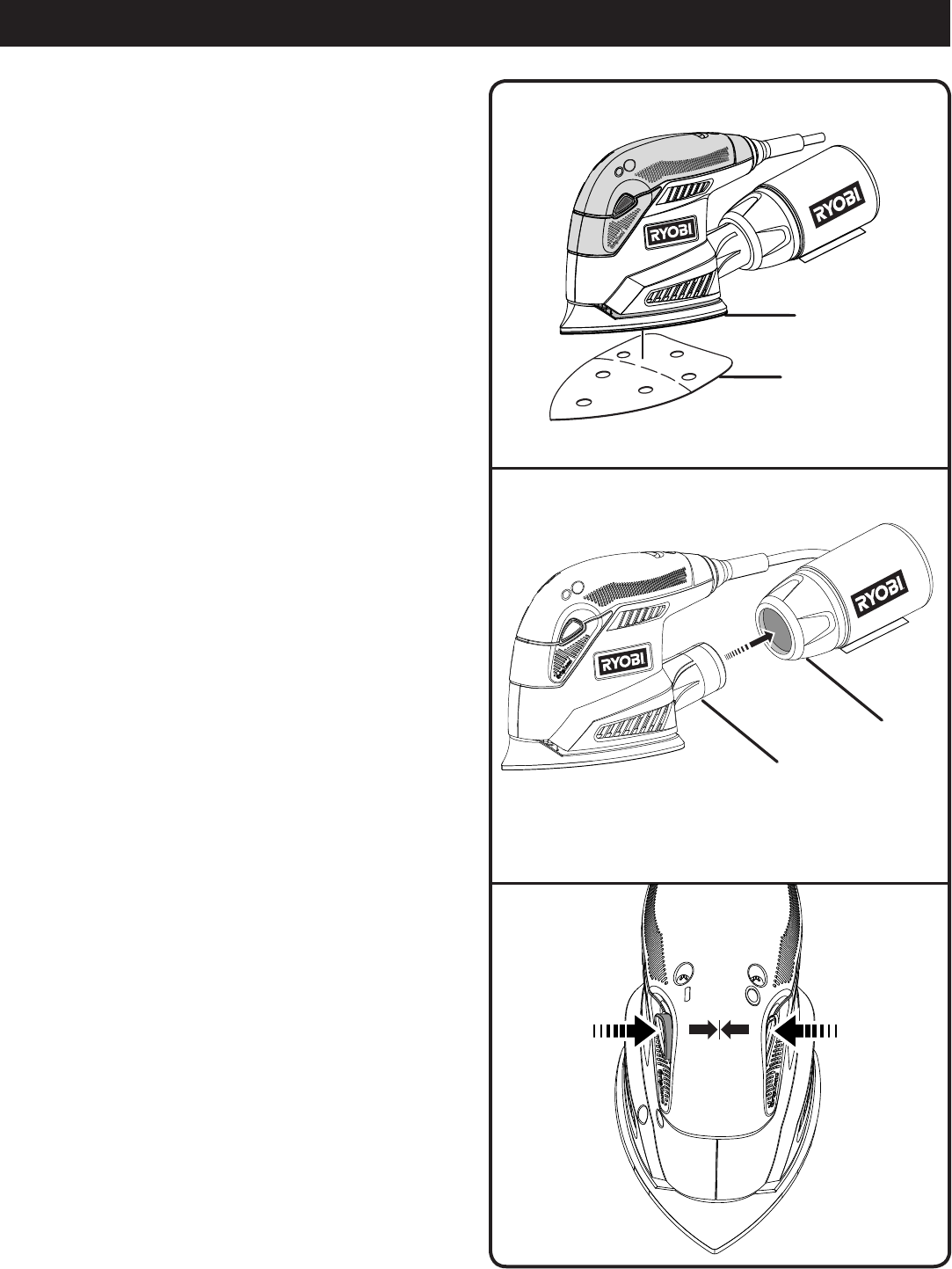
10
Sheet/Pad Recommended Use
Heavy scrubbing pad Paint and rust removal
(Part no. CFS1501-36)
Light scrubbing pad Light scrubbing and cleaning
(Part no. CFS1501-37)
Polishing pad Polishing
(Part no. CFS1501-38)
60-grit sanding sheet Coarse sanding
(Part no. CFS1501-33)
120-grit sanding sheet Light sanding
(Part no. CFS1501-34)
240-grit sanding sheet Finish sanding
(Part no. CFS1501-35)
OPERATION
Fig. 2
Fig. 4
Fig. 3
hook-anD-Loop
paD
sanDing sheet
Dust bag
bLower exhaust
on
ATTACHING HOOK-AND-LOOP SANDING
SHEETS
See Figure 2.
Unplug the sander.
Align holes in hook-and-loop type sanding sheet with
holes in pad, then carefully press fuzzy side of the sand-
ing sheet against pad as tightly as possible.
NOTE: Hook-and-loop type sanding sheets can be
reused for the life of the sanding abrasive. It is rec-
ommended that you keep the sanding sheet back-
ing clean to provide for best adhesion. Clean the
sheet and hook-and-loop pad by brushing lightly
with a light brush.
TURNING THE SANDER ON/OFF
See Figure 4.
While holding the tool in normal operating position:
Push the ON/OFF switch to the left to turn sander on.
Push the ON/OFF switch to the right to turn sander off.
ATTACHING THE DUST BAG
See Figure 3.
The dust bag provides a dust collection system for the sand-
er. Sanding dust is drawn up through the holes of the sanding
sheet and collected in the dust bag during sanding.
Unplug the sander.
Using a slight twisting motion, firmly slide dust bag as-
sembly over blower exhaust on sander.
off



